
Overview
Ovens Valley is rich and varied over a wide range of elevations from the rivers and fertile valley floors to some of the highest peaks in Victoria, including Mount Feathertop. These landscapes are highly valued in the community for their biodiversity, agricultural importance as well as lifestyle and opportunities for recreation and tourism. Natural and healthy landscapes are key to the healthy community and economy of the Upper Ovens Valley.
Public land makes up 92% of the area and is heavily forested rising up to high treeless alpine peaks. The iconic Alpine and Mount Buffalo National Parks are areas listed as part of the Australian Alps Australia’s Natural Heritage.
Private land makes up 8% of the area and rural land includes primary production of grapes, hops, apples, nuts, chestnuts as well as cattle and sheep grazing.
Agri-tourism is an important and growing industry in the area, such as wineries and other value adding enterprises. There are also many “lifestyle” land owners and hobby farmers on small properties.
Observing the Affect of Elevation on Biodiversity
The Upper Ovens Valley provides a rare opportunity to observe the effect of change in elevation on landscape ecology from 300 metres above sea level (masl) in the valley floors to over 1900 metres at the summit of Mt Feathertop.
The vegetation zones that can be observed are described below. The altitude ranges of the zones vary significantly with aspect and topography. These distinct vegetation zones can be best observed on a drive up Mt Buffalo or the Great Alpine Road to Mount Hotham. On the Mount Buffalo plateau an interesting inverted tree line can be observed where Alpine Ash grows above snow gum and treeless areas. This phenomenon is due to the undulating nature of the plateau as the huge granite massive has eroded into peaks and troughs. The lower depressions trap cold air under an inversion layer of warmer air and are treeless or support snow gums while the surrounding higher slopes above the inversion layer are warmer and support Alpine Ash and montane species.
Caring for the Land
Aboriginal people cared for this land for thousands of years and Traditional Owners continue have a strong connection to this country. The Upper Ovens Valley Landcare Group acknowledges the Traditional Owners of the Upper Ovens valley and respects their knowledge of the country. We pay our respect to Elders past present and emerging. We acknowledge all Traditional Owners of the Upper Ovens Valley as the First Peoples and Traditional Custodians of the land including , Taungurung, Dhudhuroa, Waywurru and Jaithmathang.
More information about the Taungurung Land and Waters corporation can be found at https://taungurung.com.au
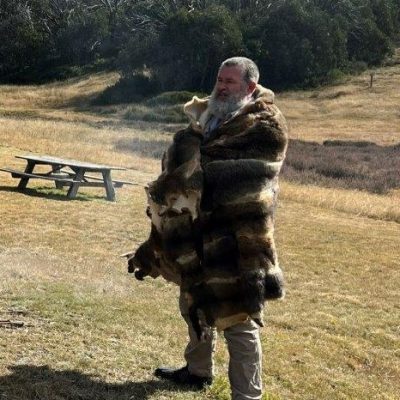
Upper Ovens Valley Vegetation Zones
Riparian
On the valley floors, at around 300 – 400 masl,the river banks and associated alluvial terraces are fertile, regularly inundated and permanently moist. Dominated by Manna Gums (Eucalyptus viminalis), Candlebarks (E. rubida) and Mountain Swamp Gums (E. camphora), they have a secondary tree layer of wattles and scattered dense patches of shrubs, ferns, grasses and herbs. This is where the Upper Ovens Landcare Group does most of its environmental restoration work due to past disturbance from mining and clearing that have now encouraged the invasion of weeds This has led to the loss of natural habitat and access. Some areas are completely infested and chocked with blackberries and species of introduced trees such as willows, elms and maples.
These riparian areas are valued by the local community and visitors alike for the protection of nature and enjoyment of these beautiful river environments. Looking after the riparian environment enhances the habitat health for all native species, in particular our flagship species, the platypus. The Ovens River is one of only two significant rivers in the whole Murray-Darling Basin that remains unregulated.
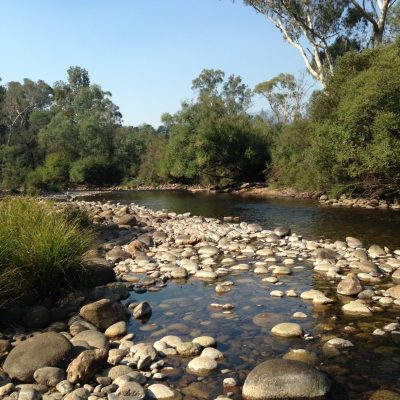
Foothills
The vast foothills cover most of the forested area of the Upper Ovens Valley from the valley edges to about 900 masl. They contain a range of tree species but commonly occurring are the narrow leaf (E.radiata) and broad leaf (E.dives) peppermints along with stringybarks and Brittle Gum (E.mannifera).
They are quite robust forests and generally able to respond well to fire (apart from the most severe) due to their ability to re-sprout from epicormic shoots on the trunk that providing sustenance for the tree until the canopy re-establishes.
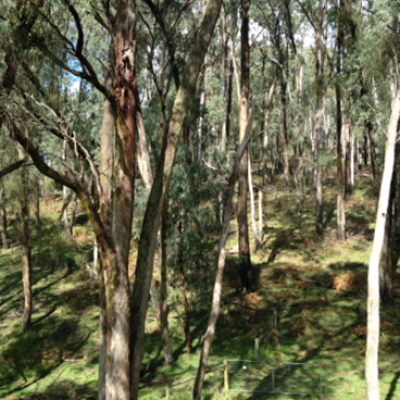
Tall Wet Forests
The tall wet forests are dominated by Alpine Ash (E. delegatensis) forests that prevail here in a distinctive zone from about 900 to 1200 masl, dominating all other species. Alpine Ash is an obligate seeder, which means it doesn’t regenerate vegetatively after fire (unlike to foothill forest species) and only regenerates from seed. In addition, the seed requires cold periods under snow to become viable and an ash bed, meaning it is quite a specialist species as it has adapted to and found its niche in the mountains.
The means most Alpine Ash forests are single aged which relate to fire history. The big risk for Alpine Ash is that as it doesn’t produce seed until about 20 years of age, frequent fires of less than 20 years interval will extinguish the species as no seed bearing trees survive. This has led to the massive intervention of manual re seeding of Alpine Ash forests over the last 10 years as some of these forest have been burnt multiple times in the last 20 – 30 years leading to the potential complete loss of these forests in areas.
The question remains whether under climate change scenarios for more fire and higher temperatures, does the Alpine Ash forest have a future or should we be reseeding with species more resilient to climate change at these altitudes?
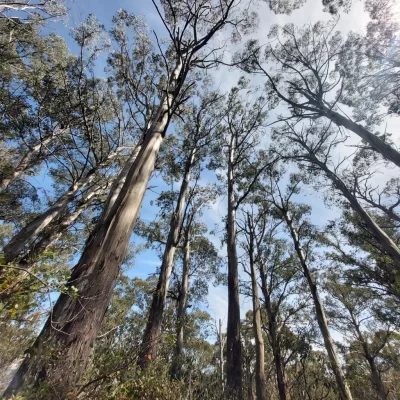
Montane Forests
The taller Montane Forests start to appear on the highest margins of the Tall Wet Forests as the area becomes too cold for Alpine Ash but lower than the pure snow gum zone. The montane forest is dominated by the majestic Mountain Gum (E. dalrympleana) but can include higher elevation Candelbark (E. Rubida) and lower level snow gums (E. pauciflora) that can be quite large. This forest typically occurs around 1000 to 1400 masl.
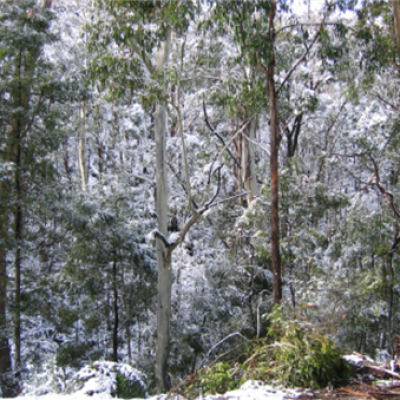
Snow Gum Forests and Woodlands
Snow gums (Eucalyptus pauciflora) are an icon of the Australian alps. They are the only eucalypt completely adapted to these higher elevations above about 1400 masl and dominate the final treed area before area becomes too cold for tree growth at all and becomes alpine treeless.
Snow Gums are a long lived species and without fire they grow in to beautiful large snarled single trunk trees that make them iconic. Unfortunately much of the snow gum forest had been burnt over the last 20 years. Snow Gums have a large underground lignotuber (like a Mallee tree type) that stores energy. Following fire the above ground parts typically die and the tree re-sprouts at the ground level from the lignotuber. This means that after fire they remain scrubby and multi stemmed for some time until they mature but frequent fire eventually overstretches the ability of the tree to re-sprout and they can die. Unfortunately due to recent fierce and widespread fire through snow gum areas, few large mature trees now exist and a lot of it is now scrubby. Sadly, while the forest is in this state, these forests are more likely to burn again as seen on the southern end of Mt Buffalo in 2020. Moreover, snow gums are currently being attacked by an overabundance of the native Longicorn Beetle which is insidiously killing trees including the few remaining large and mature trees. Snow gums are at significant risk of total collapse of the system.
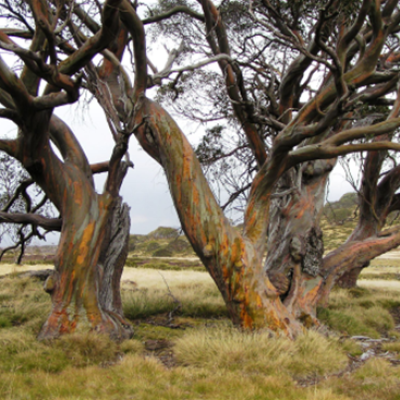
Alpine Treeless Areas
Emerging above the tree line these spectacular open peaks, high plains, spurs and ridges are snow covered for long periods in winter and spring, being too cold for trees to grow; The spectacular arrays of wildflowers carpet the alpine herbfields and grasslands which flourish along with alpine peatlands in wet areas. These areas were once favoured by mountain cattleman as they grazed these areas for over 100 years. Debate raged for years about the devastating impact these heavy hard hoofed animals were having on our delicate alpine areas, verses the cultural heritage of the cattleman. Thankfully, cattle were finally removed from the Alpine National Park in 2006 as the area was recovering from the huge 2003 fires which burnt most of these areas. These areas are now being threatened by other heavy hard hoofed animals that have emerged: feral horses and deer.
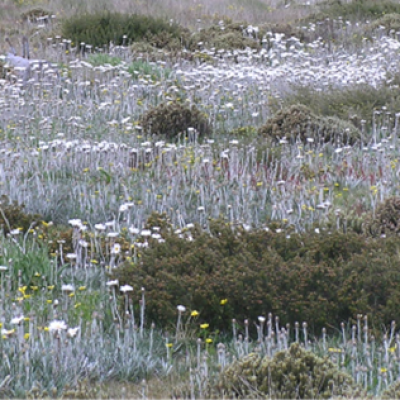
Threats to the Environment
There are threats to the health of the area that have come from past land use practices since white settlement in the 1830’s including the introduction of invasive species. Soil erosion from old mining activity including dredging and sluicing and gravel extraction have disturbed and altered the natural ecology. The key invasive animals impacting the Upper Ovens include feral deer, foxes and cats. Blackberries are widespread and English Broom is emerging. Invasive tree species are a serious biosecurity threats including willows, maples and elms.
Active management is needed to reduce their impact and restore damaged areas.
Collapsing Ecosystems
A recent study has found that the Sub-alpine and Mountain Ash forests (including Alpine Ash) are two of 19 global ecosystems that are at risk of total collapse. The paper: Combating ecosystem collapse from the tropics to the Antarctic can be found at: https://onlinelibrary.wiley.com/doi/10.1111/gcb.15539
